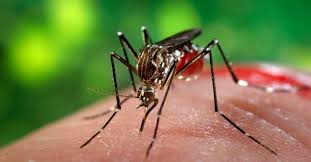In an era where misinformation seems to lurk in every corner of the internet, UC Berkeley psychologists propose a counterintuitive approach to teaching children how to separate fact from fiction: expose them to misinformation, but under controlled conditions and with proper guidance.
A new study, published on October 10 in Nature Human Behaviour, shows that exposing children to false claims online—with careful oversight—can help them develop critical fact-checking skills necessary for navigating the digital world.
Evan Orticio, lead author of the study and a Ph.D. student in UC Berkeley’s Department of Psychology, emphasized the importance of teaching children these skills early, instead of creating a sanitized digital environment. He argues that shielding kids from all misinformation may leave them unprepared to discern truth from falsehood when they inevitably encounter misleading information.
“We need to give children experience flexing these skepticism muscles and using critical thinking skills within this online context in order to set them up for their future, where they’re going to be in these contexts close to 24/7,” Orticio said.
The Study: Teaching Skepticism in a Digital World
The research involved two experiments with 122 children, aged 4 to 7, which tested how exposure to varying degrees of truthfulness affected their skepticism. In one experiment, children were shown an e-book with factual and false information about animals. Some children read accurate descriptions, while others saw bizarre claims—like zebras having red and green stripes. The children were then asked to decide if the information was true or false.
In the second experiment, a simulated search engine displayed factual and fictitious information about an alien species called Zorpies. Participants had the chance to verify a claim that “all Zorpies have three eyes” by revealing their hidden eyes through a fact-checking feature.
Researchers found that children who were previously exposed to false claims were more diligent in fact-checking the Zorpies. In contrast, those who saw reliable information earlier were less likely to verify the claims. This suggests that children can adapt their skepticism based on the reliability of their digital environment.
“Children can leverage their expectations of how a digital environment works to make reasonable adjustments to how much they trust or distrust information at face value—even if they know next to nothing about the content itself,” Orticio noted.
A Response to Growing Digital Misinformation
The urgency of the study stems from the increasing exposure of children to online misinformation. Research indicates that nearly a third of children use social media by age nine, with some encountering health misinformation almost immediately upon joining platforms like TikTok. Even kid-friendly platforms like YouTube Kids are not immune to spreading toxic or false content.
According to Orticio, the study highlights the need for parents to recognize the limitations of supposedly safe online spaces. “Platforms can give a false sense of security, allowing falsehoods to go unchecked and be taken as true and acceptable,” he said.
Practical Advice for Parents and Educators
While Orticio acknowledged that constant monitoring of children’s online activities is impractical for many parents, he suggested that discussions about online content and fact-checking are essential. “Rather than trying to create the most sanitized corner of the internet, parents should talk with their children about how to check claims and question what they’re seeing.”
The study also underscores the need for children to develop fact-checking skills in a simple and practical manner. “In real life, fact-checking is actually very hard. We need to bridge that gap,” Orticio concluded.
Ultimately, the researchers believe that by exposing children to misinformation in controlled settings, they can build a foundation for more sophisticated skepticism and media literacy in adulthood.












